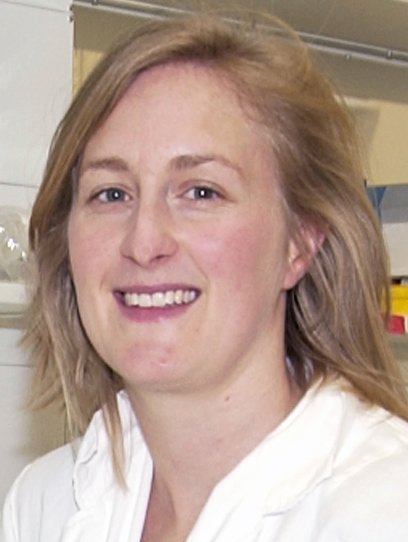User login
Researchers in Australia have used whole exome sequencing to discover a previously unknown pathogenic allele in a 4-year-old girl with early-onset cerebral systemic lupus erythematosus.
The researchers, led by Julia Ellyard, Ph.D., of Australian National University in Canberra, characterized the allele’s deleterious activity and recommend a personalized course of therapy based on their findings. Whole exome sequencing (WES) of the patient had revealed a rare, homozygous mutation in the three prime repair exonuclease 1 (TREX1) gene. The mutant protein TREX1 R97H was associated with a 20-fold reduction in exonuclease activity and an elevated interferon-alpha signature in the patient, who was deemed a candidate for experimental neutralizing anti-interferon-alpha therapy, which is under investigation in multiple phase II clinical trials, Dr. Ellyard and her colleagues reported (Arthritis Rheumatol. 2014 Aug. 19 [doi:10.1002/art.38824]).
The girl first presented at 3 years of age with arthritis, malar rash, diffuse purpura rashes, episodic fever, chronic headache, and vomiting, but no history of seizures or visual disturbance. Her Lebanese parents were first cousins but had no family history of autoimmunity. Her serology was positive for high-titer antinuclear antibodies, anti-double stranded DNA antibodies, anticardiolipin antibodies, elevated immunoglobulin G and A, and lymphopenia and Coombs’ positive anemia – all of which are consistent with systemic lupus erythematosus (SLE). MRI following her development of right-sided hemiparesis at 4 years revealed occlusion of the left middle cerebral artery and left-sided MCA infarct, and subsequent MR angiography showed "widespread and marked irregularities of the medium sized vessels consistent with vasculitis in the context of cerebral SLE," the authors wrote.
The study is the first to find a homozygous TREX1 variant in a patient with systemic lupus erythematosus. It also is the first study conducted by the university’s Center for Personalized Immunology, which was established to help discover causative genetic variation with the goal of delivering individualized treatment strategies.
The findings demonstrated "the efficacy of WES in identifying the genetic basis of autoimmune disease on an individual, personalized basis. We were able to identify a pathogenic variant in TREX1, which had not been a prime candidate for sequencing, and subsequently confirmed the deleterious effect of the mutation," the researchers wrote. "WES can identify genetic causes of complex autoimmune diseases such as SLE and, through identification of rare and novel deleterious variants, improve therapeutic options."
Dr. Ellyard and her colleagues received grant and fellowship support from Australia’s National Health and Medical Research Council and the Royal Australian College of Physicians. None of the authors reported conflicts of interest.
Researchers in Australia have used whole exome sequencing to discover a previously unknown pathogenic allele in a 4-year-old girl with early-onset cerebral systemic lupus erythematosus.
The researchers, led by Julia Ellyard, Ph.D., of Australian National University in Canberra, characterized the allele’s deleterious activity and recommend a personalized course of therapy based on their findings. Whole exome sequencing (WES) of the patient had revealed a rare, homozygous mutation in the three prime repair exonuclease 1 (TREX1) gene. The mutant protein TREX1 R97H was associated with a 20-fold reduction in exonuclease activity and an elevated interferon-alpha signature in the patient, who was deemed a candidate for experimental neutralizing anti-interferon-alpha therapy, which is under investigation in multiple phase II clinical trials, Dr. Ellyard and her colleagues reported (Arthritis Rheumatol. 2014 Aug. 19 [doi:10.1002/art.38824]).
The girl first presented at 3 years of age with arthritis, malar rash, diffuse purpura rashes, episodic fever, chronic headache, and vomiting, but no history of seizures or visual disturbance. Her Lebanese parents were first cousins but had no family history of autoimmunity. Her serology was positive for high-titer antinuclear antibodies, anti-double stranded DNA antibodies, anticardiolipin antibodies, elevated immunoglobulin G and A, and lymphopenia and Coombs’ positive anemia – all of which are consistent with systemic lupus erythematosus (SLE). MRI following her development of right-sided hemiparesis at 4 years revealed occlusion of the left middle cerebral artery and left-sided MCA infarct, and subsequent MR angiography showed "widespread and marked irregularities of the medium sized vessels consistent with vasculitis in the context of cerebral SLE," the authors wrote.
The study is the first to find a homozygous TREX1 variant in a patient with systemic lupus erythematosus. It also is the first study conducted by the university’s Center for Personalized Immunology, which was established to help discover causative genetic variation with the goal of delivering individualized treatment strategies.
The findings demonstrated "the efficacy of WES in identifying the genetic basis of autoimmune disease on an individual, personalized basis. We were able to identify a pathogenic variant in TREX1, which had not been a prime candidate for sequencing, and subsequently confirmed the deleterious effect of the mutation," the researchers wrote. "WES can identify genetic causes of complex autoimmune diseases such as SLE and, through identification of rare and novel deleterious variants, improve therapeutic options."
Dr. Ellyard and her colleagues received grant and fellowship support from Australia’s National Health and Medical Research Council and the Royal Australian College of Physicians. None of the authors reported conflicts of interest.
Researchers in Australia have used whole exome sequencing to discover a previously unknown pathogenic allele in a 4-year-old girl with early-onset cerebral systemic lupus erythematosus.
The researchers, led by Julia Ellyard, Ph.D., of Australian National University in Canberra, characterized the allele’s deleterious activity and recommend a personalized course of therapy based on their findings. Whole exome sequencing (WES) of the patient had revealed a rare, homozygous mutation in the three prime repair exonuclease 1 (TREX1) gene. The mutant protein TREX1 R97H was associated with a 20-fold reduction in exonuclease activity and an elevated interferon-alpha signature in the patient, who was deemed a candidate for experimental neutralizing anti-interferon-alpha therapy, which is under investigation in multiple phase II clinical trials, Dr. Ellyard and her colleagues reported (Arthritis Rheumatol. 2014 Aug. 19 [doi:10.1002/art.38824]).
The girl first presented at 3 years of age with arthritis, malar rash, diffuse purpura rashes, episodic fever, chronic headache, and vomiting, but no history of seizures or visual disturbance. Her Lebanese parents were first cousins but had no family history of autoimmunity. Her serology was positive for high-titer antinuclear antibodies, anti-double stranded DNA antibodies, anticardiolipin antibodies, elevated immunoglobulin G and A, and lymphopenia and Coombs’ positive anemia – all of which are consistent with systemic lupus erythematosus (SLE). MRI following her development of right-sided hemiparesis at 4 years revealed occlusion of the left middle cerebral artery and left-sided MCA infarct, and subsequent MR angiography showed "widespread and marked irregularities of the medium sized vessels consistent with vasculitis in the context of cerebral SLE," the authors wrote.
The study is the first to find a homozygous TREX1 variant in a patient with systemic lupus erythematosus. It also is the first study conducted by the university’s Center for Personalized Immunology, which was established to help discover causative genetic variation with the goal of delivering individualized treatment strategies.
The findings demonstrated "the efficacy of WES in identifying the genetic basis of autoimmune disease on an individual, personalized basis. We were able to identify a pathogenic variant in TREX1, which had not been a prime candidate for sequencing, and subsequently confirmed the deleterious effect of the mutation," the researchers wrote. "WES can identify genetic causes of complex autoimmune diseases such as SLE and, through identification of rare and novel deleterious variants, improve therapeutic options."
Dr. Ellyard and her colleagues received grant and fellowship support from Australia’s National Health and Medical Research Council and the Royal Australian College of Physicians. None of the authors reported conflicts of interest.
FROM ARTHRITIS & RHEUMATOLOGY
Key clinical point: Whole exome sequencing can identify the genetic causes of complex autoimmune diseases such as SLE on an individual, personalized basis.
Major finding: The mutant protein TREX1 R97H was associated with a 20-fold reduction in exonuclease activity and an elevated interferon-alpha signature.
Data source: A case report of a 4-year-old girl with early-onset cerebral SLE.
Disclosures: Dr. Ellyard and her colleagues received support from Australia’s National Health and Medical Research Council and the Royal Australian College of Physicians. None of the authors reported conflicts of interest.

